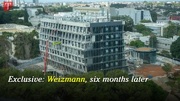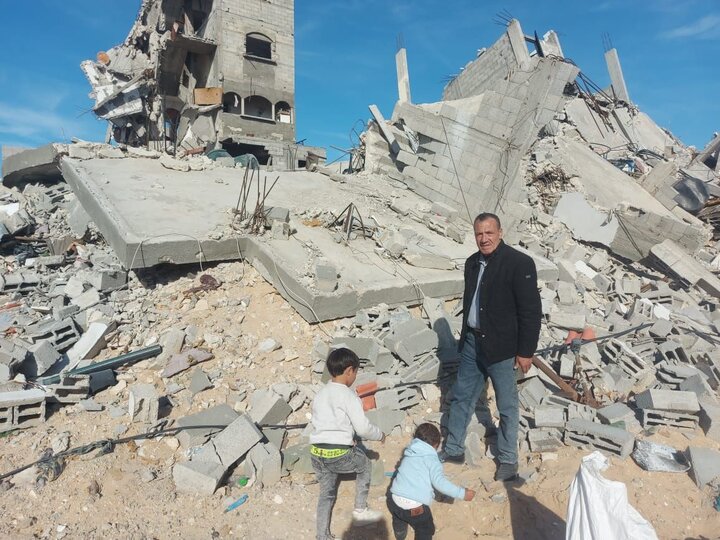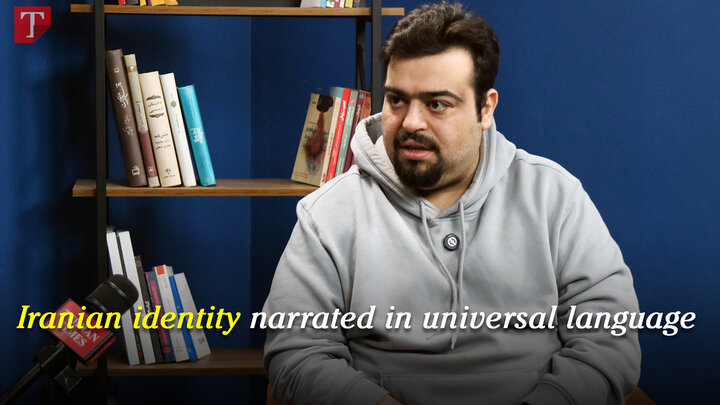-
 2026-01-20 20:51
2026-01-20 20:51
By Faramarz Kouhpayeh
10 lies Western media is telling you about the unrest in Iran
TEHRAN – January marked Iran’s most eventful month since the nation came under direct U.S.-Zionist strikes in June of 2025. What began as harmless, peaceful protests by business owners demanding economic reforms—the fundamental source of the Iranian people’s hardship being years of crippling Western sanctions—devolved into what can essentially be characterized as systemic urban terrorism.
-

More US-Israeli ‘sabotage cells’ dismantled across Iran
TEHRAN — Iranian security and intelligence agencies announced a series of decisive operations on Tuesday, successfully dismantling multiple organized terror networks and “ISIS-style” cells across several provinces.
-

Lavrov says Trump’s remarks against Iran are ‘deeply concerning’
TEHRAN - Russian Foreign Minister Sergei Lavrov said on Monday that US President Donald Trump's incendiary remarks against Iran in support of violent protestors are “deeply concerning”.
-

Riots were intended to disrupt peace and stability in Iran: Turkish president
TEHRAN - Turkish President Recep Tayyip Erdogan has reacted to the recent riots in Iran, unashamedly instigated by US President Donald Trump and the Israeli regime.
-

By staff writer
Davos showdown over Greenland: Europe confronts Trump, faces its costly US reliance
TEHRAN — Europe and the United States remain locked in a tense political standoff. That tension was on full display at the World Economic Forum in Davos on Tuesday, where European leaders openly criticized President Donald Trump’s push to take control of Greenland and his threats to impose new tariffs on European countries. Their remarks underscored a growing sense of frustration in Europe over Washington’s increasingly confrontational approach.
-

By Shahrokh Saei
Trump’s second term: Thunder at home, flames abroad
TEHRAN — One year after Donald Trump returned to the White House, the national mood is uneasy. Polls show that half of Americans believe the economy has worsened under Trump’s leadership, and his approval rating remains stubbornly low.
Politics
-

Riots were part of anti-Iran moves by US and Israel, Pezeshkian tells Pakistan PM
TEHRAN - Iran’s president, Masoud Pezeshkian, says the recent riots in the country were the continuation of futile efforts by the U.S. and Israeli regime during the 12-day war against Iran back in June 2025.
-

Araghchi blasts Davos billionaires’ club for Zionist surrender
TEHRAN – Iranian Foreign Minister Abbas Araghchi has fiercely condemned the World Economic Forum (WEF) for revoking his invitation to the Davos summit, pointing out that the organization succumbed to fabricated narratives and intense political pressure from Israel and the U.S.
-

‘We’ll set their world on fire’: Iran's military issues warning over leadership red line
TEHRAN — Senior Iranian military commanders on Tuesday delivered a fierce rebuff to recent threats from Washington, warning that any hostile move against the Islamic Republic’s leadership or sovereignty will trigger a global response that will “set the enemy’s world on fire.”
Sports
-

Iranian mountaineer Gozali goes missing after winter Makalu summit
TEHRAN - An Iranian mountaineer, Abolfazl Gozali, who had conquered Makalu, has gone missing on the way back.
-

Iran aims for the next stage at the 2026 FIFA World Cup: official
TEHRAN – The Secretary General of the Iran Football Federation, Hedayat Mombeini, stated that all efforts are aimed at reaching a point for a successful World Cup appearance and advancing to the later rounds.
-

Iran unchanged in FIFA ranking
TEHRAN - Iran maintained their 20th position in the latest FIFA World Ranking released on Monday.
Culture
-

Documentary on Palestinian photojournalist Fatima Hassouna wins at France’s Lumière Awards
TEHRAN – The documentary “Put Your Soul on Your Hand and Walk” directed by Iranian filmmaker Sepideh Farsi about life in Gaza during the Israeli military actions, won the Best Documentary award at France’s 31st Lumière Awards in Paris on Sunday.
-

Fajr Theater Festival’s My Iran section to spotlight national resistance
TEHRAN- A new section titled My Iran has been added to the 44th edition of the Fajr International Theater Festival, the secretary of the festival has announced.
-

“The Old English Baron” comes to Iranian bookstores
TEHRAN- A Persian translation of English novelist Clara Reeve’s book “The Old English Baron” has recently been published by Qoqnus Publications in Tehran.
Economy
-

Daily gas supply to power plants reaches 170m cubic meters
TEHRAN - The head of the National Iranian Gas Company (NIGC) announced the daily delivery of over 170 million cubic meters of gas to power plants in the past three days.
-

Customs clearance of essential goods hits new record high
TEHRAN - The Islamic Republic of Iran Customs Administration (IRICA) announced that a new record has been reached for the clearance of various essential goods from the country's customs in the past 24 hours.
-

Car production reaches 643,000 units in 9 months
TEHRAN - An analysis of production statistics for Iran’s three major automakers in the first nine months of the current Iranian calendar year (March 21-December 21, 2025) shows that car production has reached 643,86 units, a decrease of 56,293 units compared to the same period last year.
Society
-

Iran, China, UNAIDS celebrate success of pathfinder HIV project
TEHRAN – The Islamic Republic of Iran, the People’s Republic of China, and the Joint United Nations Programme on HIV/AIDS (UNAIDS) recently celebrated the successful completion of a pathfinder HIV project, designed to bridge the HIV testing gap in Iran’s national HIV response and generate alternative solutions to ensure a resilient national HIV testing programme in the years to come.
-

DOE to develop pest management plan
TEHRAN – Given the importance of protecting biodiversity and genetic resources, the Department of Environment (DOE) is planning to develop a pest management plan to combat plant pests and pathogens as the main threat to the country’s unique ecosystem, particularly forests.
-

Iran ranks 1st in cognitive sciences among Islamic nations
TEHRAN – According to Web of Science (WoS) data, over a five-year period (from 2021 to 2025), Iran (with 32 documents) ranks first in cognitive sciences among Islamic countries.
Tourism
-

Karaftoo cave requires special measures for potential UNESCO nomination, governor says
TEHRAN - Karaftoo cave in Kordestan province requires targeted measures to support a potential nomination for UNESCO World Heritage status, the governor of Divan-Darreh said on Tuesday.
-

Technology, public participation key to protecting historical sites, researcher explains
TEHRAN – Technology can play an effective role in the preservation of historical monuments through documentation, conservation and restoration, Iranian historical heritage researcher Hossein Alizadeh said in an interview published on Sunday.
-

Massive nabkhas added to national list
TEHRAN – Iran has added nabkhas located near the city of Kashan in central Isfahan province to its national list of natural heritage sites, the Ministry of Cultural Heritage, Tourism and Handicrafts said on Tuesday.
International
-

Davos showdown over Greenland: Europe confronts Trump, faces its costly US reliance
TEHRAN — Europe and the United States remain locked in a tense political standoff. That tension was on full display at the World Economic Forum in Davos on Tuesday, where European leaders openly criticized President Donald Trump’s push to take control of Greenland and his threats to impose new tariffs on European countries. Their remarks underscored a growing sense of frustration in Europe over Washington’s increasingly confrontational approach.
-

Trump’s second term: Thunder at home, flames abroad
TEHRAN — One year after Donald Trump returned to the White House, the national mood is uneasy. Polls show that half of Americans believe the economy has worsened under Trump’s leadership, and his approval rating remains stubbornly low.
-

From ceasefire to coercion: How Lebanon is dragged into a surrender framework
BEIRUT — What is unfolding around Lebanon’s so–called “ceasefire oversight mechanism” is not a misunderstanding nor a technical dispute—it is a deliberate campaign of pressure.
Most Viewed
-
Stabbed, burned, beheaded, and then sanctioned
-
Why Washington misunderstands power in Iran
-
10 lies Western media is telling you about the unrest in Iran
-
Foreign-backed terror cells across Iran crushed: Intelligence Ministry
-
Top Iranian officials hail defeat of foreign-backed sedition in joint statement
-
Iran security forces repelled a mob of 200 raiding Palestinian diplomatic residence: report
-
GII 2025: Iran ranks 11th among Islamic nations
-
The Gaza ‘Board of Peace’ is Humpty Dumpty diplomacy — assembled for spectacle, not restoration
-
Recent riots the Iranian version of Lebanon pager attacks, says Qalibaf
-
Serbian president’s invocation of a modern Operation Ajax and the 1953 script
-
More US-Israeli ‘sabotage cells’ dismantled across Iran
-
From Protest to Armed Riots: Inside Iran's unrest and the foreign hands
-
A shift in Iran-US interactions?
-
Iran, Tajikistan to remove drivers' visas
-
Mayamey and its centuries-old Persian caravanserais












